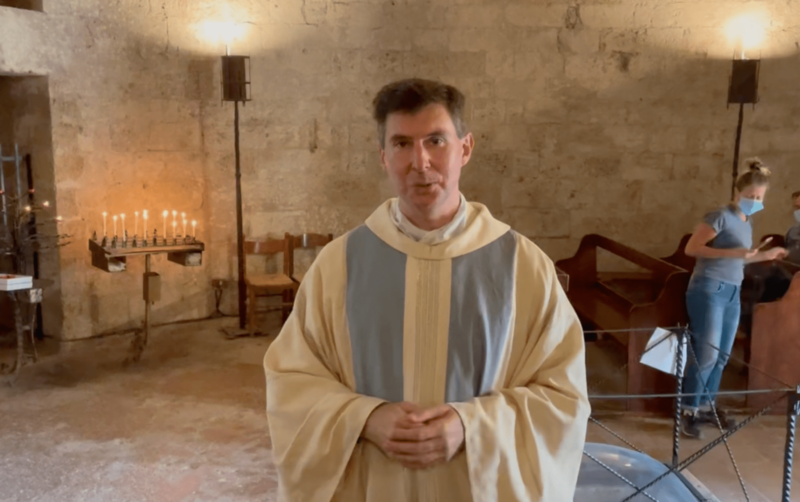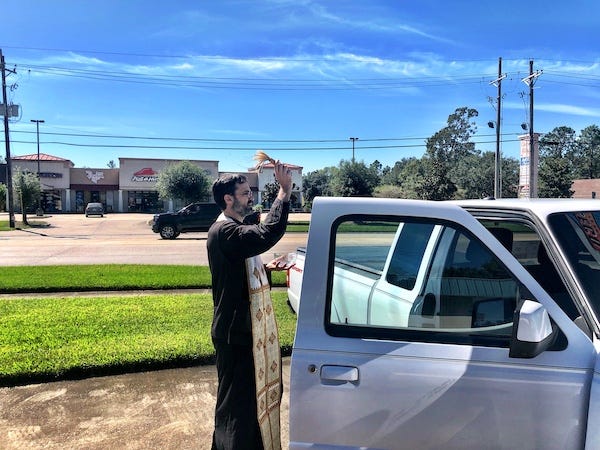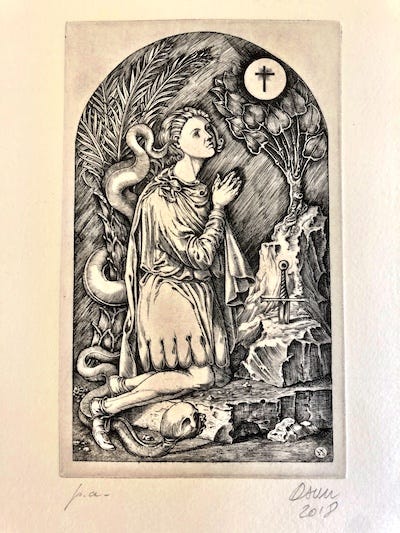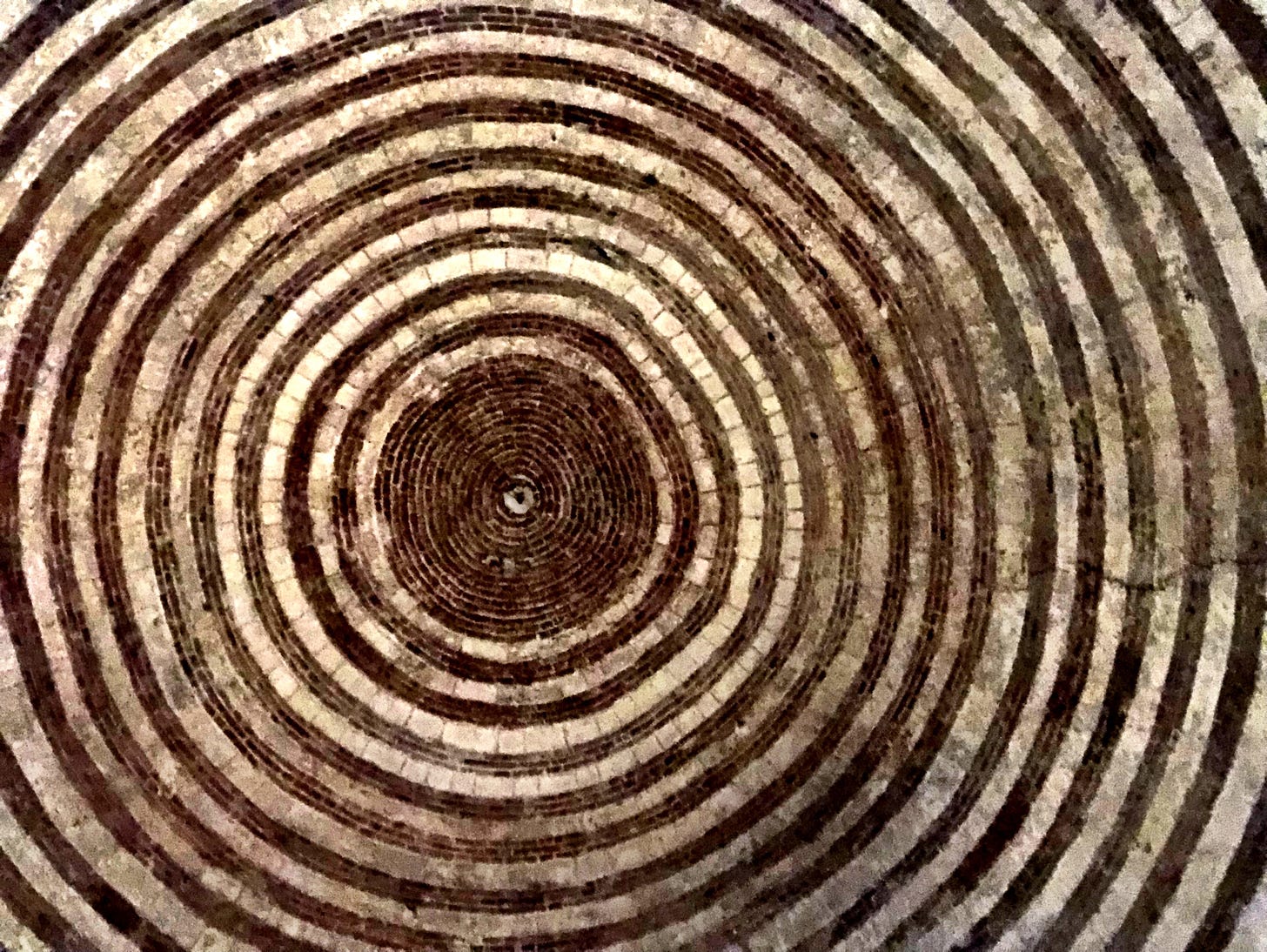Mircea Eliade’s Guide To The Sacred
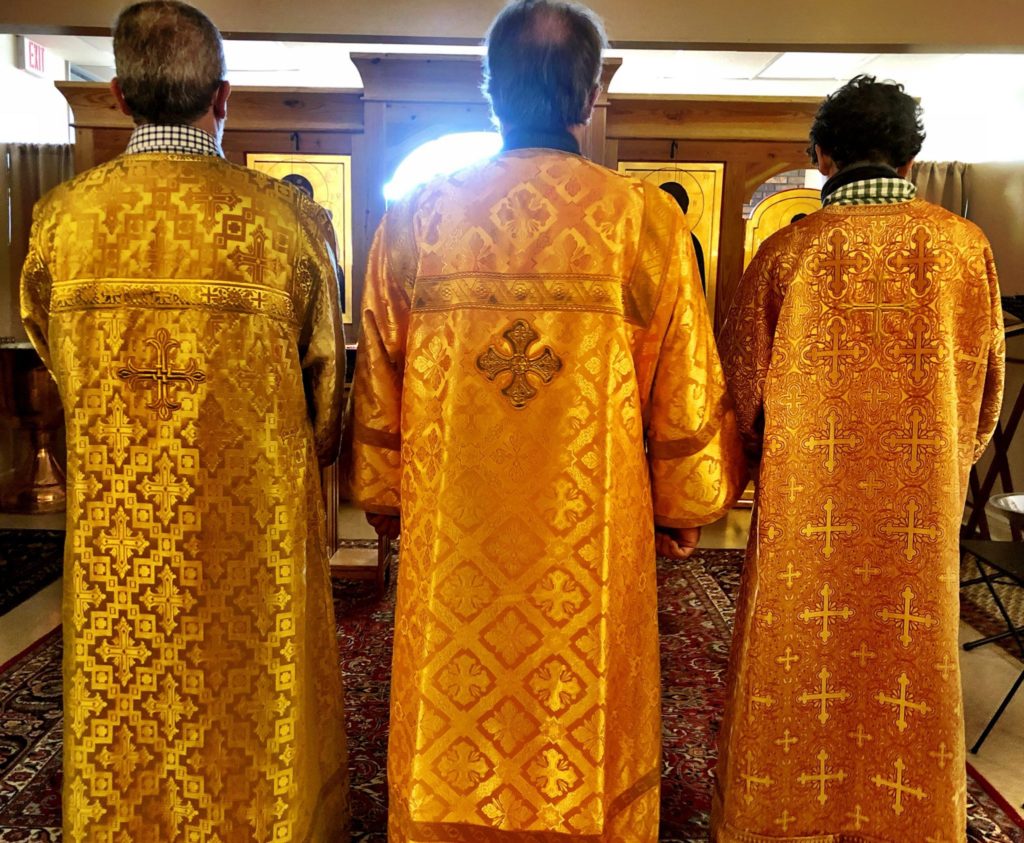
As many of you know, I write a Substack newsletter that appears two or three times each week, to paid subscribers. I reserve the newsletter for writing about spiritual matters, mostly, but also more generally for writing about hopeful things. I’m really excited about the new book I’m preparing to start work on, and will be sharing most of my thinking-out-loud about that book with my Substack readers. The book, broadly speaking, is about the disenchantment and re-enchantment of the world, from a traditional Christian point of view.
I’m about to write tonight’s newsletter, which will continue in the vein of the one I’ve adapted below. What you’ll see beneath this paragraph is a version of what appeared on my most recent newsletter. I invite you to subscribe, if this is the kind of thing you like.
—
When I wrote in this space about my new book project, about re-enchanting the world, someone suggested to me that I read Mircea Eliade’s classic The Sacred And The Profane.
Eliade (1907-1986) was a Romanian historian, novelist, and scholar of religion. This book is one that I’ve meant to read for years, but never got around to. At the Touchstone conference last weekend, Eighth Day Books had its tables set up, and there was a single copy, just asking me to buy it. So I did, and started it on the last leg of my flight home. I finished the first chapter as we landed in Baton Rouge, and my mind was on fire. Eliade’s thought illuminated like a row of Klieg lights my forthcoming project! As soon as I finish the book, I’m going to rewrite the opening chapter that I’m about to send to my editor at Sentinel.
The purpose of the book is to explain what traditional religion is, and is not. Eliade writes that to the religious man, experiencing the “living God” is not like encountering the God of the philosophers. “[I]t was not an idea, an abstract notion, a mere moral allegory. It was a terrible power, manifested in the divine wrath.”
This holy terror, this fear of God, is not like what it means to be scared by encountering a bear in the woods. It is more like what one feels when one is confronted with an overwhelming manifestation of power, of mystery, of majesty, “in which the perfect fullness of being flowers.”
The sacred, in this sense, is a manifestation of “a reality of a wholly different order from ‘natural’ realities.” Eliade prefers the term hierophany — meaning “manifestation of the sacred” — to refer to this phenomena. (This is not the same thing as a theophany, which means “manifestation of a god.” All theophanies are hierophanic, but not all hierophanies are theophanic.) Eliade:
By manifesting the sacred, any object becomes something else, yet it continues to remain itself, for it continues to participate in tis surrounding cosmic milieu. A sacred stone remains a stone; apparently (or, more precisely, from the profane point of view), nothing distinguishes it from all other stones. But for those to whom a stone reveals itself as sacred, its immediate reality is transmuted into a supernatural reality. In other words, for those who have a religious experience all nature is capable of revealing itself as cosmic sacrality. The cosmos in its entirety can become a hierophany.
The man of the archaic societies tends to live as much as possible in the sacred or in close proximity to consecrated objects. The tendency is perfectly understandable, because, for primitives as for the man of all pre-modern societies, the sacred is equivalent to a power, and, in the last analysis, to reality. The sacred is saturated with being. Sacred power means reality and at the same time enduringness and efficacity. … Thus it is easy to understand that religious man deeply desires to be, to participate in reality, to be saturated with power.
This is the key. Carl Trueman, in his Touchstone conference lecture, said that for moderns, to deny the Self is to destroy the Self, because the Self discovers itself through what it desires. This is false. In truth, said Trueman, “The Self is realized by discovering the structure of reality and conforming oneself to it.”
This is the fundamental metaphysical point from which we religious people diverge from profane modernity. In my view, this is also the metaphysical point on which small-o orthodox Christianity breaks with its various contemporary forms. In general, for the orthodox (theological conservatives), religion is in part a means through which we discover the structure of reality and conform ourselves to it. For the modernists (theological liberals), religion is a means by which we make ourselves at home in this world. It’s not that the orthodox don’t want to make a home in this world, or that the modernists don’t want to live in reality. Rather, it’s that the orthodox believe that all of reality is undergirded, and founded, in a sacred order of which we are a part. We can’t make it up as we go along; we must instead be open to divine revelation, and organize our lives from what has been revealed from God, because it tells us what is really Real. The modernists, by contrast, more or less disbelieve that the material world has a telos (end purpose), and that things have a logos (rational purpose) intrinsic to themselves.
Whenever you hear a Christian defending heterodox sexual morality, say something like, “I find it hard to believe that the all-powerful and eternal God really cares what we do with our body parts” — you are dealing with a modernist, and not simply because such a claim violates Scriptural teaching. In this case, metaphysics are a guide to morals. We who believe in the God of the Bible know that sex has sacred meaning because all things are saturated with the sacred. If I’m reading Eliade correctly, then all traditional and archaic religions, whatever their particular teachings about sex, share that basic understanding. A pure materialist, by contrast, can rightly say that there is no ultimate meaning behind a sexual act, other than the meaning we assign to it.
Eliade, who was raised Orthodox, writes that the traditionally religious man doesn’t want to know about ultimate reality; he wants to participate in it. As the Anglican scholar Hans Boersma so beautifully explains in his book Heavenly Participation: The Weaving Of A Sacramental Tapestry, all Christians, up until the end of the Middle Ages, believed that ultimate reality was something one participates in via ritual, practices, and other sacramental ways. It is my view, and I think Boersma’s, that Christianity will not survive unless it returns to strong sacramentalism — that is, the belief that God is everywhere present, and is filling all things, and the rituals and practices that help us live within that reality by making it manifest to us.
“For religious man, space is not homogeneous,” Eliade writes. He means that some places are qualitatively different from others. When Moses approaches the Burning Bush on Sinai, God tells him to take off his shoes, because he stands on holy ground. Eliade goes on:
It must be said at once that the religious experience of the nonhomogeneity of space is a primordial experience, homologizable to a founding of the world. It is not a matter of theoretical speculation, but of a primary religious experience that precedes all reflection on the world. For it is the break effected in space that allows the world to be constituted, because it reveals the fixed point, the central axis for all future orientation. When the sacred manifests itself in any hierophany, there is not only a break in the homogeneity of space; there is also revelation of an absolute reality, opposed to the nonreality of the vast surrounding expanse. The manifestation of the sacred ontologically founds the world. In the homogeneous and infinite expanse, in which no point of reference is possible and hence no orientation can be established, the hierophany reveals an absolute fixed point, a center.
What is he saying here? In this one short paragraph, I understood why my tourist visit to the cathedral of Chartres in 1984 became the experiential foundation of my faith. I’ve told the story many times, so I won’t bore you with all of it again. Recall that I wandered into the great medieval Gothic cathedral as a mindless tourist, and had a hierophany. Standing there, in the center of the labyrinth, gazing around me in total awe, I had an overwhelming feeling that God was real, and that He wanted me for Himself. It was the most real thing in the world.
By God’s grace, I did not do as the protagonist in Houellebecq’s novel Submission does when he has a hierophany, and rationalize it away — but neither did I act on it. Instead, it remained like a pebble I could not remove from my shoe. As I walked through life, I could not shake the Chartres hierophany: the sacred had revealed itself to me, and I had a responsibility to it. I did not want that responsibility, because if it was true, then that meant I could not create my own reality from the material of the world. For me, as a college boy, it meant that I was not free to have a sex life free of fetters, or a sex life at all (unless I married). This is why I wanted to shake the stone out of my shoe. But I couldn’t. I learned how to walk on it without limping too much, but it was always there … until finally I accepted that the stone was real, and I surrendered to the Real.
In Chartres, I caught a glimpse of “an absolutely fixed point, a center.” I spent the next eight years trying to break free of the gravity of that center, before finally surrendering. Since then, I have been engaged in a spiral orbit, moving ever closer to unity with the center, which, if I stay on the journey, will happen after I die.
I walked into Chartres as a tourist; though I didn’t really understand it at the time, I exited that cathedral as a pilgrim.
“If the world is to be lived in, it must be founded — and no world can come to birth in the chaos of the homogeneity and relativity of profane space,” writes Eliade. He’s saying that we religious people have to either discover or make sacred spaces for ourselves. We are adrift without it. For profane people, the material world is neutral and homogeneous. No place is ultimately more or less valuable than any other. It might be more pleasing to dwell in or look at, but that doesn’t give it ultimate value. This is the difference between the experience of space of sacred man vs. profane man.
That said, Eliade points out that nobody lives in a wholly profane world. “Even the most desacralized existence still preserves traces of a religious valorization of the world,” he writes. Indeed, the sacralization of Victims — usually racial and sexual minorities — and the demonization of Oppressors (racial and sexual majorities), and the rituals and practices that one must use to purify the world of the Oppressors’ evil, is at the core of the pseudoreligion of Wokeism.
God sends religious man signs. They are hierophanies that serve as a direction from God, or the gods, to do a particular thing. “In such cases, the sign, fraught with religious meaning, introduces an absolute element and puts an end to relativity and confusion. Something that does not belong to this world has manifested itself apodictically [in an undeniably true way — RD] and in so doing has indicated an orientation or determined a course of conduct.”
More Eliade:
Religious man’s desire to live in the sacred is in fact equivalent to his desire to take up his abode in objective reality, not to let himself be paralyzed by the never-ceasing relativity of purely subjective experiences, to live in a real and effective world, and not in an illusion.
This, he says, is why all traditional religions have rites for the consecration of spaces. It is claiming places for the holy. On Sunday after church, my son Lucas, who is 17 years old and just bought his first pickup truck (2011 Ford Ranger), asked our priest, Father Joshua, to bless it. We are Orthodox Christians, which means there is a blessing for everything. Here is the Orthodox prayer for the blessing of automobiles:
O Lord our God, Who makes the clouds Thy chariot and Who walks on the wings of the wind, Who has sent to Thy servant, the Prophet Elias, a chariot of fire, Who has guided man to invent this (car, truck, motorcycle, etc.) which is as fast as the wind. We thank Thee for Thou hast provided Thy servants with this vehicle to serve their various needs.
Therefore, O Master, pour out now upon it Thy heavenly blessings; assign to it a guardian angel to preserve it from all evil. And as Thou didst grant faith and grace by Thy deacon Philip to the man from Ethiopia who was sitting in his chariot and reading holy Scripture, show the way of salvation to Thy servants. So that helped by Thy grace and always intent on doing good works, they may after all the trials of their pilgrimage on earth, attain to everlasting joys, through the intercessions of our Most-pure Lady, the Theotokos and Ever-Virgin Mary, by the power of the precious and life-giving Cross; through the prayers of the holy Angels; of St. Nicholas the Wonderworker and of all the Saints:
For Thou art the Provider and Sanctifier of all things and to Thee do we ascribe glory, and to Thy Only-begotten Son, and Thy All-holy, good, and life-creating Spirit, now and ever and unto ages of ages. Amen.
This might seem silly to you, but it doesn’t seem that way to us. Once a year, all pious Orthodox homes receive a visit from the family’s priest, who takes holy water and parades through the house praying God’s blessing on it. This is not just a neat ceremony, but as we believe, it really does call down and channel divine grace in a special way, infusing it into matter. Wesley J. Smith’s story about the holy water flowers at his Orthodox parish is an example of how this can occasion a hierophany.
To me, the most interesting part of the first chapter is Eliade’s discussion of chaos and cosmos. In everyday usage, “cosmos” and “universe” are synonyms, but that’s not quite true. Universe refers to all things that exist. Cosmos, on the other hand, refers to an ordered whole. Conceptually speaking, the universe is chaotic, whereas the cosmos is what you have when you have ordered the universe through consecration.
“The sacred reveals absolute reality, and at the same time makes orientation possible,” writes Eliade. “Hence it founds the world in the sense that it fixes the limits and establishes the order of the world.”
The hierophany at Chartres was when God began to found the world I would live in as a man, because it was the first moment that I deeply understood, beyond all rationality, that I had stumbled into the presence of the immense Other. For me, every time I say grace over a meal, or cross myself, or stand by with my head bowed as a priest consecrates a pickup truck, I am, in a sense, extending within my consciousness the bounds of that founding hierophany. God first awakened within me, in my early maturity, an awareness that there was a center of all Being, and that it was not inside of me, but I was, in a mystical sense, inside of it — and was being called to by it to join myself more fully to it (or rather to Him, for God is not only Being, but he is a person).
Eliade writes about when the Scandinavian colonists first arrived in Iceland and cleared it for human habitation, they did not regard that as an original undertaking or a profane work. “For them, their labor was only a repetition of a primordial act, the transformation of chaos into cosmos by the divine act of creation,” says Eliade.
This also describes the early Benedictine monks, moving out across chaotic post-Roman Europe, and transforming chaos into cosmos by consecrating and cultivating the wildness in nature, and the wildness in people’s souls. Reading these lines, I stopped to reflect on The Benedict Option, and for the first time thought of it as an attempt to meet the accelerating chaos caused by our world’s de-Christianization (or, by its dis-integration with Christianity). It is an attempt to transform chaos into cosmos by more deeply cosmicizing, if that’s a word, our own lives. That is, the people who say the Benedict Option is not missional are not only wrong, but missing the point. I have found that often people who say that have a shallow idea of what it means to be Christian. I don’t mean to question their passion for God and His Word, but I do mean to question whether they grasp the metaphysical depth of the Christian faith.
Pope Francis (or his speechwriters) has repeatedly, but obliquely, dismissed the Benedict Option as anti-evangelical, as hiding in the catacombs. I’ve said a million times that that is not true, but let me emphasize here the metaphysical problems with the pope’s stance (a stance that various Protestants have taken). To evangelize means to bring the gospel to unbelievers, to convince them to believe in Jesus Christ as their Savior. That is to say, they are manifesting a hierophany. Almost no one who hears an evangelical appeal is ever really convinced by the superior logic of the case put to him; rather, he must in some sense intuit that this is a kind of hierophany, that God himself is speaking to him. If he converts and comes into the life of the church, that man will have to embark on a life of deepening his discipleship. Part of that is to allow the Holy Spirit for more fully inhabit the chaos of his mind and his life, and to order it to Christ. As his own inner chaos coalesces in greater order, through a lifetime of faithful worship, obedience, repentance, and charity, all of which open him even more to the healing grace of God, the religious man becomes a vessel through which God manifests himself to the world, and orders the chaos.
Therefore, if we Christians do not cultivate discipleship within ourselves, within our families, and within our communities, we will be substantially unchanged by having received the good news and believed it, and will be like those Jesus condemns in the Parable of the Sower. That is to say, if our evangelism is not ultimately about transformation through participating in the holy, then it’s not worth much. If we Christians are going to reclaim the chaos for God, we first have to allow the Holy Spirit to reclaim the chaos inside ourselves, our families, and our churches. That is the Benedict Option: to recognize that the force of chaos of the world in the present moment is so overwhelming that in order to avoid being torn apart by it, Christians need to step back somewhat to strengthen ourselves spiritually — so that when we enter the world, we will be steady icons of light and order, bringing God’s cosmos to the chaos.
This is how Mircea Eliade’s book helped me understand the Benedict Option in a metaphysical way.
Then I arrived at the part of Chapter 1 in which Eliade discusses the importance in traditional world religions of the “sacred pole” as the “cosmic axis” of the newly founded world. He mentions a nomadic Australian aboriginal tribe who believe that the sacred pole they carry with them allows them to communicate with the divine, and to create “their world” wherever they wander.
“For the pole to be broken denotes catastrophe; it is like ‘the end of the world,’ reversion to chaos,” writes Eliade. He goes on to say that for this tribe, the pole is the only way they can communicate with the sky realm. Without this connection to their god, they dissolve. “Life is not possible without an opening toward the transcendent; in other words, human beings cannot live in chaos,” he writes. “Once contact with the transcendent is lost, existence in the world ceases to be possible — and the [Aboriginal tribe] let themselves die.”
The sacred pole, in that tribal religion, marks the Center Of The World. My margin notes say, “Is this our secular world? Our pole has been broken — is this why we are slipping into chaos and dying?” This is obviously true for those who do not believe in God, but for almost all of us who do believe in God, the desacralized cosmos is too much within us. And this is what my book is going to be about: how and why to recover a sense of the sacralized cosmos.
And then it hit me: for St. Galgano, the sword in the stone is the sacred pole! Eliade last night taught me to see Luca Daum’s iconic engraving of St. Galgano in a metaphysical light. Here, once again, is the image that the Italian artist gave to me that night in Genoa in 2018, when he came forward and said he had been praying that afternoon in his studio, and the Holy Spirit told him to come out that night and give me this engraving. Luca did not understand why, but he did as he was told, and handed me this, titled “The Temptation of St. Galgano”:
It hit me on the plane last night: this iconic image is the message of my new book. St. Galgano’s story is here, for those who have joined this newsletter list since I last wrote about him. The saint had a hierophany — a dream of the Archangel Michael — and a theophany — a vision of Jesus, Mary, and the Apostles standing around a round church that had appeared atop a hill — calling him to leave the world and follow Jesus, but he resisted. It was only after the third — him telling God that it would be easier for him to put his sword through the stone next to him than to lay it down and leave the world, and the sword miraculously piercing the stone — that Galgano did as God asked. His conversion was instantaneous and radical. He lived as a hermit in a hut build over or near the sword in the stone. He burned so intensely that he died a year later. But he must have been a walking miracle, because bishops and abbots attended his funeral, and he was canonized a few years later.
Luca Daum’s engraving shows Galgano kneeling bare-kneed on a rock (symbolizing physical hardship), in prayer, his eyes focused on heaven. His sword is stuck in the stone, symbolizing the center point of his world. It was for Galgano what Eliade would call the “cosmogonic moment”: the founding of Galgano’s new life. Three years after Galgano’s death, the bishop built a round church over the sword in the stone, just as Galgano had seen in his vision. After watching a year ago Andrei Tarkovsky’s 1983 film Nostalghia, and being stunned by its power, and discovering that San Galgano figures into the plot (I wrote about that here, below the Kingsnorth material), I vowed to go to the chapel to pray the next time I was in Italy. As you will remember, I visited it last month, and prayed before the sword in the stone:
Directly overhead, inside the dome of the 12th century church, this is what it looks like:
The expanding cosmos, from the center point marked by the sacred pole. Notice in the Luca Daum engraving that the mountain that has been sacralized by the sword in the stone has borne fruit in the form of a tree with broad leaves, miraculously growing out of hard stone. Life arises from sacrifice (the death of Galgano’s old self). The image is telling us that the profound conversion of Galgano, symbolized by the sword tilling the ground of his hard heart, allowed so much grace to flow into Galgano that miracles, including the healing of the sick, passed through him from God. This is all possible as long as Galgano keeps his eyes firmly affixed to heaven.
His temptation is a serpent who comes out of his ear — that is, his head; we are looking at a thought — that when fully expressed, has the head of a man. He is trying to convince the saint to take his eyes off of the sacred, and look down at the earth, to the profane (from Latin: pro + fano, meaning “outside of the temple”). If the serpent can convince Galgano to take his eyes off of the sacred, the sacred spell will be broken, and he can destroy his faith. The serpent’s face is that of every person whose words desacralize the world by causing us to take our eyes off of what is really Real.
Later in the chapter, Eliade talks about how in the Rig Veda of Hindu culture, the world was founded when a god cut off a snake’s head. Eliade writes, “As we said, the snake symbolizes chaos, the formless, the unmanifested. To behead it is an act of creation, passage from the virtual and the amorphous to that which has form.” To kill a dragon is to defeat the forces of chaos and destruction. In a spiritual sense, Galgano has to use the sword sheathed in the rock to behead the serpent and save his faith.
On Sunday morning in church I was praying about this, and realized that I have thought all along that the St. Galgano irruption into my life was a sign that God was going to call me to make a great personal sacrifice. He might yet do that. But the thought occurred to me today that the message embedded in Luca Daum’s arresting engraving embodies in a single simple image the whole message of this book I want to write. In fact, in the proposal I sent to my agent, I suggested using this as the cover image. Luca’s engraving is the conceptual road map for this next book.
On my knees in Galgano’s church, I prayed fervently for God to reveal his will to me, and I prayed just as fervently for the saint to join me in this prayer. I have a feeling that a big part of the answer came to me on the plane last night, reading Mircea Eliade. You might even call the Daum drawing a … sign.
(This is the end of the adaptation of my Substack post.)
I will be writing a lot more about Eliade and this book in my newsletter over the coming days. Again, if this is the kind of thing you like, please subscribe. It’s only five dollars per month, and you can quit anytime.
This afternoon — Tuesday — I received two short videos from Father Daniel Scheidt, a Catholic priest from the US who is on sabbatical in Italy. He went to the chapel in Montesiepi built in the 12th century over the sword in the stone, and said mass for me and my family. He sent a beautiful short video telling me so. It literally left me in tears. Very few people have ever done such a kind thing for me. Here’s a screenshot. What a blessing to have such good people going with me on this pilgrimage. Thank you, Lord:
